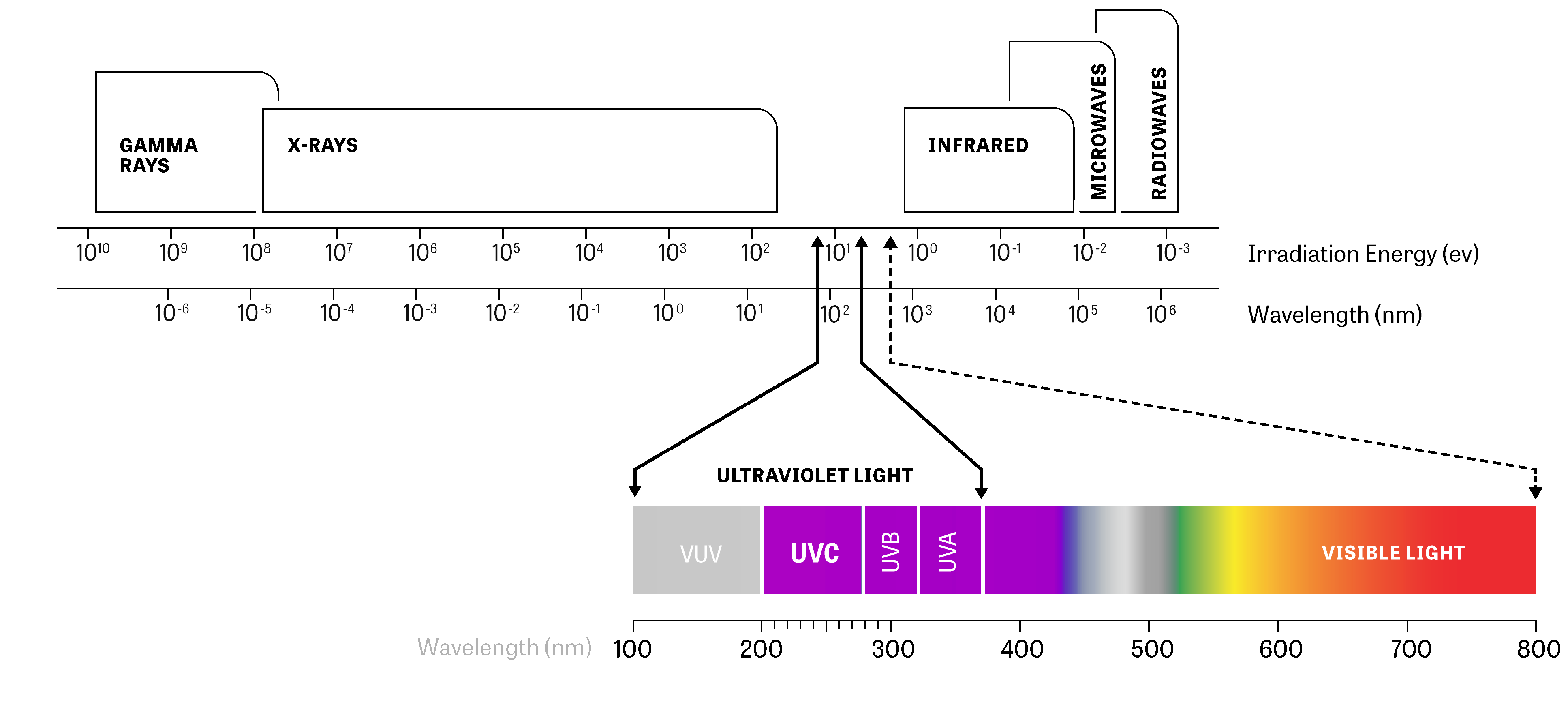UVC Guide
The Ultimate Guide for ultraviolet light and everything else you need to know about UVA, UVB, UVC, side-effects, applications and more.

The Ultimate Guide for ultraviolet light and everything else you need to know about UVA, UVB, UVC, side-effects, applications and more.

 The lower wavelength limit of human vision is conventionally taken as 400 nm, so ultraviolet rays are invisible to humans, although some people can perceive light at slightly shorter wavelengths than this. Insects, birds, and some mammals can see near-UV.
The lower wavelength limit of human vision is conventionally taken as 400 nm, so ultraviolet rays are invisible to humans, although some people can perceive light at slightly shorter wavelengths than this. Insects, birds, and some mammals can see near-UV. UV rays have different levels of penetration. Although natural UVC is blocked by the atmosphere and doesn't make it to us, man-made UVC only goes as far as the outermost cells of our skin, while UVB only goes as far as the topmost layer of our skin and no further. UVA, however, has the highest penetrating power. It easily gets to the deep layers of our skin.
UV rays have different levels of penetration. Although natural UVC is blocked by the atmosphere and doesn't make it to us, man-made UVC only goes as far as the outermost cells of our skin, while UVB only goes as far as the topmost layer of our skin and no further. UVA, however, has the highest penetrating power. It easily gets to the deep layers of our skin.